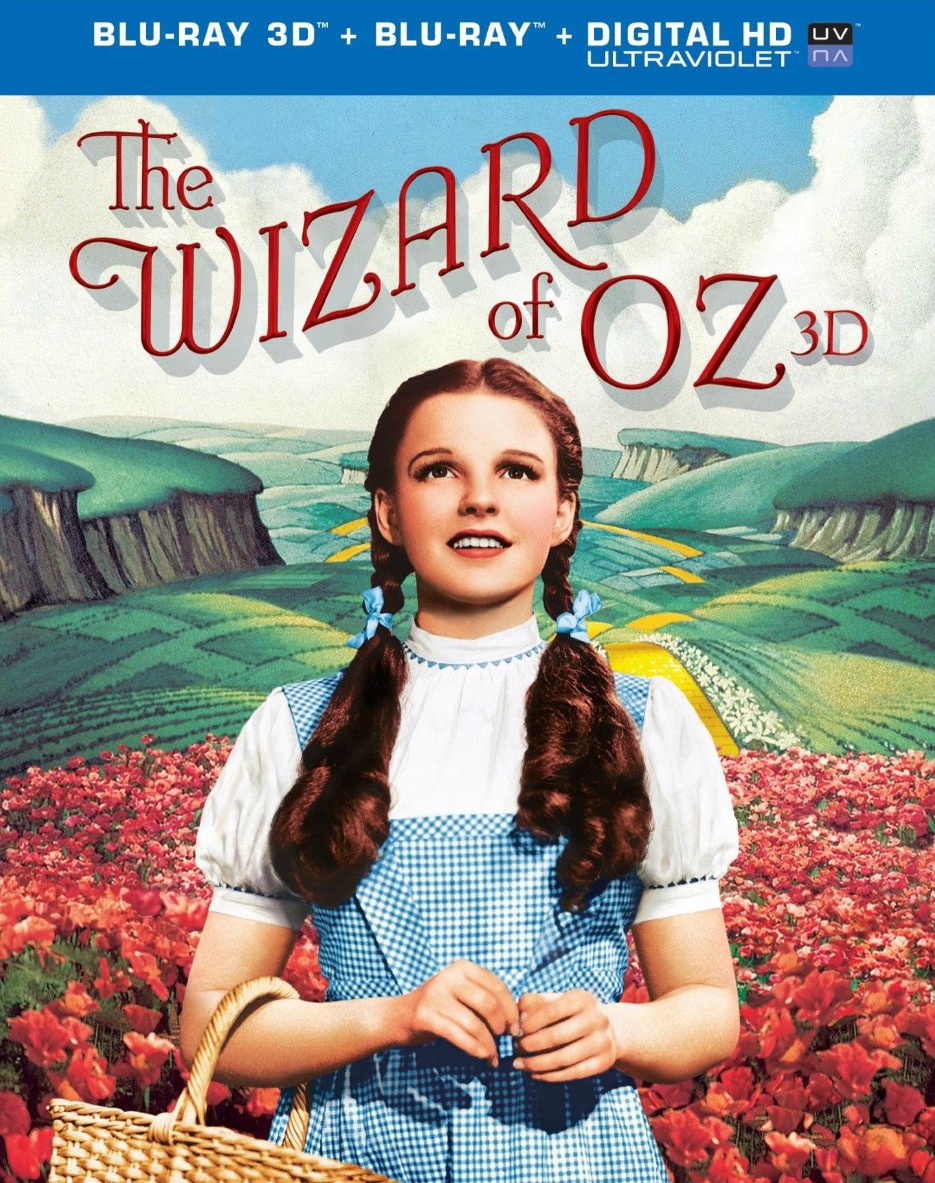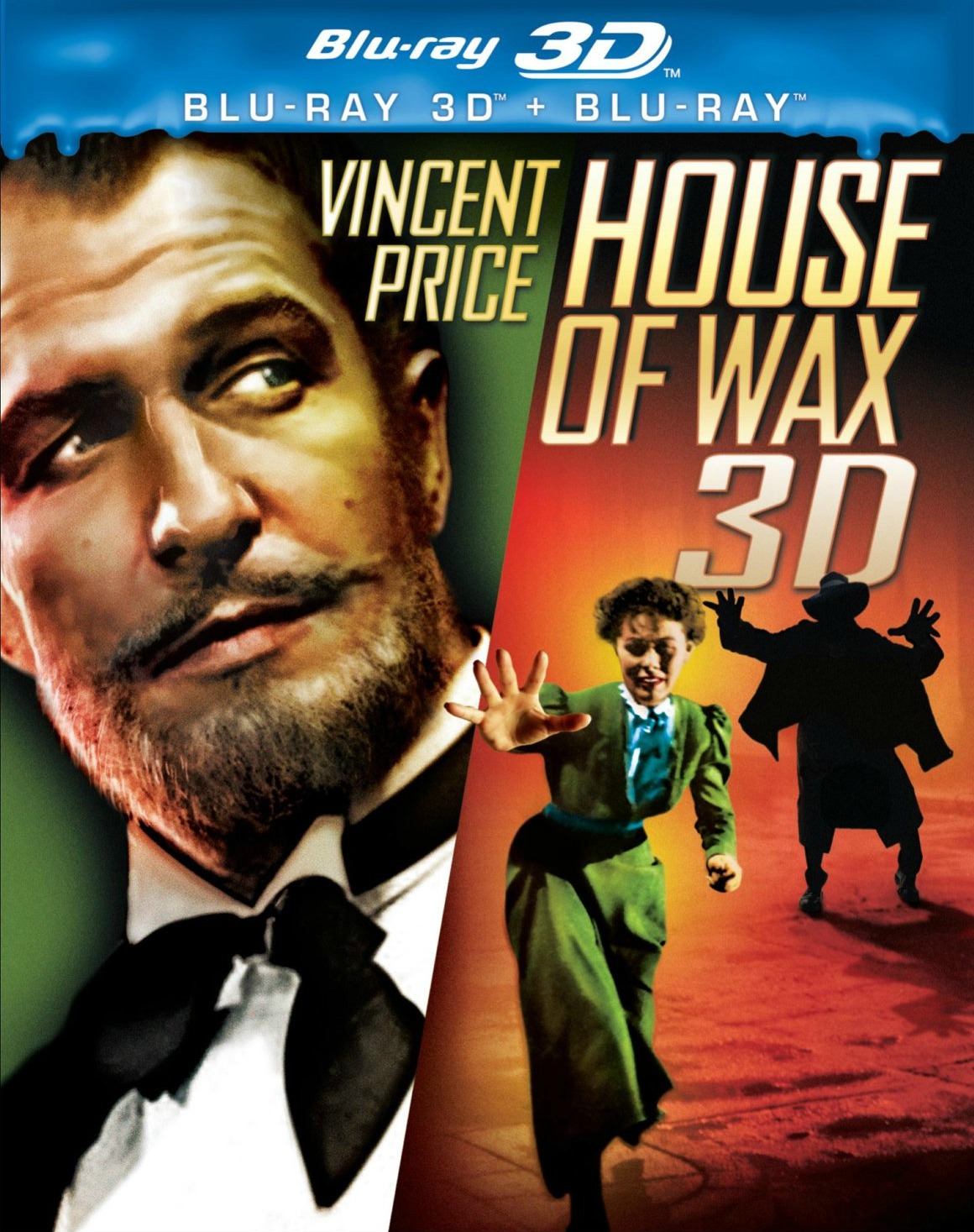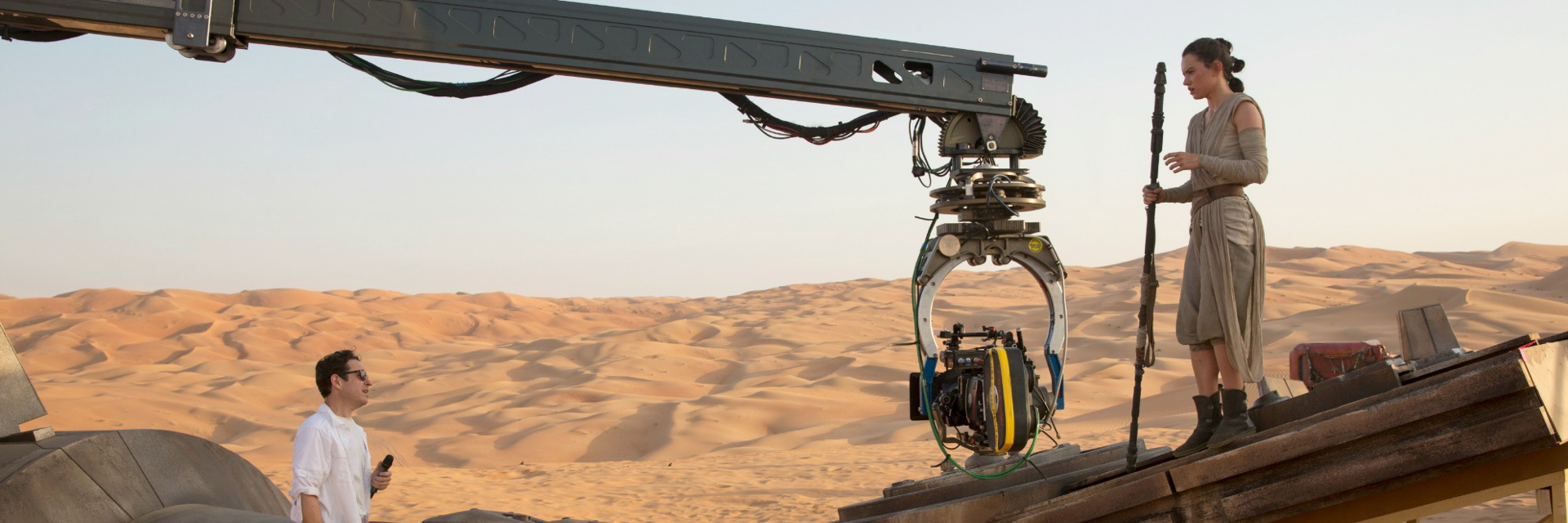Warner Home Video is showing that the studio is the most pro-active and progressive studio in regards to Blu-ray 3D with the stellar releases of “The Wizard of Oz” ($39.99 or five-disc collector’s set for $105.43) and “House of Wax” ($39.99).
 I already called “The Wizard of Oz” the best new family movie of the year when it premiered last month in IMAX 3D, and the Blu-ray 3D also surely deserves to be classified as at least a type of new movie because the conversion to 3D and the first Hi-Def conversion make everything look visually stunning, from the black-and-white First Act culminating with Dorothy’s home being swept inside the tornado, to the vivid yellow brick road of Oz.
I already called “The Wizard of Oz” the best new family movie of the year when it premiered last month in IMAX 3D, and the Blu-ray 3D also surely deserves to be classified as at least a type of new movie because the conversion to 3D and the first Hi-Def conversion make everything look visually stunning, from the black-and-white First Act culminating with Dorothy’s home being swept inside the tornado, to the vivid yellow brick road of Oz.
Although the primary effect of the 3D is to add very perceptible depth to each frame of film, there are moments where something pushes forward into the audience, such as when the witch’s guards walk toward the camera with their long weapons aimed at the audience, not to mention the Munchkins popping up amid the flowers just before they reveal themselves to Dorothy, followed by a more impactful bubble that carries the good witch to the middle of the festvities to intrdouce herself. The forest is even more scary than ever before with spooky tree branches popping out from all angles. And then there are those flying monkeys!
Perhaps this has been there all along but you have to giggle at the now-politically incorrect closing title card listing “The Singer Midgets as the Munchkins.”
No matter how many new retrospectives we see about “The Wizard of Oz,” they never seem to grow tedious, and that is the case with the latest feature-length new documentary in the bonus features, “The Making of The Wonderful Wizard of Oz.” Plenty of new tidbits and anecdotes, though it would have been nice and seemingly appropriate to include a segment on the conversion of the movie to 3D, a fascinating technical challenge for the oldest film even converted in its entirety.
Plenty of previous bonus features are also included.
The 3D in the 1953 “House of Wax” probably never looked this convincing, effective and wthout blurring or color fading even upon its initial theatrical release 60 years ago. The Vincent Price-starring film is considered somewhat of a sci-fi classic that went beyond cult status and became one of the top 100 moneymaking films of all time, according to audio commentary during the film by David Del Valle and Constantine Nasr.
 The presentation is so pristine and true to its original release that the intermission card is included despite the short 88-minute running time, with the commentators explaining that filmmakers needed 10-minutes to change reels of film in the projector.
The presentation is so pristine and true to its original release that the intermission card is included despite the short 88-minute running time, with the commentators explaining that filmmakers needed 10-minutes to change reels of film in the projector.
Although commentators speak with reverence of the movie even in its 2D form, the 3D is really the primary attraction here, even though the one-eyed filmmaker (André De Toth) didn’t employ it much except — the most obvious is two arbitrary scenes before and after the intermission showing a man hit a paddle ball at the camera to decent effect, if for no apparent reason. The other obvious efforts more in context of the story provide depth in front and behind a chandelier in a dance hall, followed by a low-angle shot of can-can dancers. There is also a chair thrown at the camera, and, in a back room near the end of the movie, a skeleton hand, a mask, and a swinging cherub try to accentuate the 3D effect as actress Phyllis Kirk slowly walks past (a little blurry). Perhaps the msot effective shot is a final fight scene in which Charles Bronson stands up in front of the camera and engages in a fight in which punches are thrown towards the camera lens.
As for the bnous features, the entire two-hour original movie “Mystery of the Wax Museum” is included, along with a 48-minute retrospective “Behind the Scenes: House of Wax – Unlike Anything You’ve Seen Before,” featuring reflections by filmmakers of the stature of Martin Scorsese, Wes Craven, Joe Dante, and others, most of whom offer comment on the irony and challenge of one-eyed director Andre de Toth to produce a 3D movie he was physically unable to perceive. The featurette along with the audio commentary also provides interesting historical perspective on the other technological breakthrough of the movie, the use of “Warner-Phonic” surround sound that most theaters were not equipped to showcase.
Del Valle and Nasr have some interesting anecdotes and drop a lot of names and go into a lot of detail that will most likely be appreciated by only the devotees of this movie who will be the primary target audience.
— By Scott Hettrick
